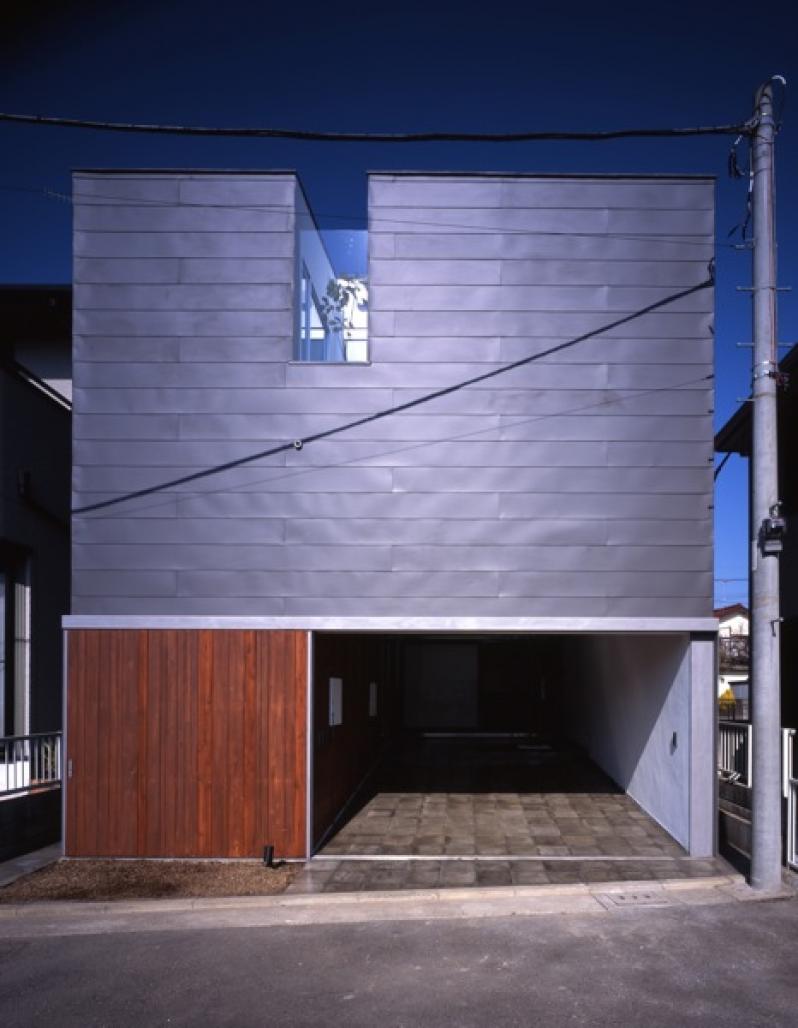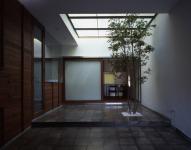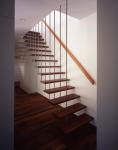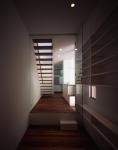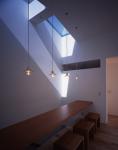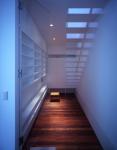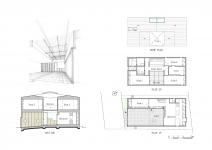House In is a residence for a couple and their two grown-up children.
If the standard of the modern family group is said to be a nuclear family, I feel that the contemporary family is evolving even further. The nuclear family is breaking down, resulting in an “individualized family” with each member being the basic unit. Thus, if the residence for a nuclear family is an nLDK composition, my task here was to explore the ideal residence for an individualized family.
House In sees the individual as the basic unit, and is designed with four private rooms and shared spaces for the four residents. Spaces are provided within the residence just like pocket parks in urban planning. The dimensions hope to offer various places and means for the residents – adults who each spend more time by themselves – to have the opportunity to congregate naturally.
The courtyard with the evergreen ash, living room, common study, and floating balcony of fiberglass reinforced plastic (FRP) grating each serve as shared spaces; they have different purposes and are positioned at calculated distances. The methods of approach are also diverse: the resident could be walking across the concrete block pavement, climbing the cantilever stairs, or passing through private rooms. The shared spaces also remain connected enough to allow people to feel each other’s presence, so that the sense of communication will be relayed to the next shared space: for example, through the vaulted stairs, through the FRP grating, or through the low window.
House In aims to bring in the natural flow of communication that occurs in city life into the residence, enabling members of the individualized family to communicate more easily and frequently. This I believe results in a superior residence with better functionality.
Teruo Miyahara
Miyahara Architect Office
2008
2011
Site area : 100.16m2
Building area : 86.64m2
Building height : 7.353m
Structure : Wood Structure
Teruo Miyahara
Naoko Taniguchi
Hidetomo Izumi
